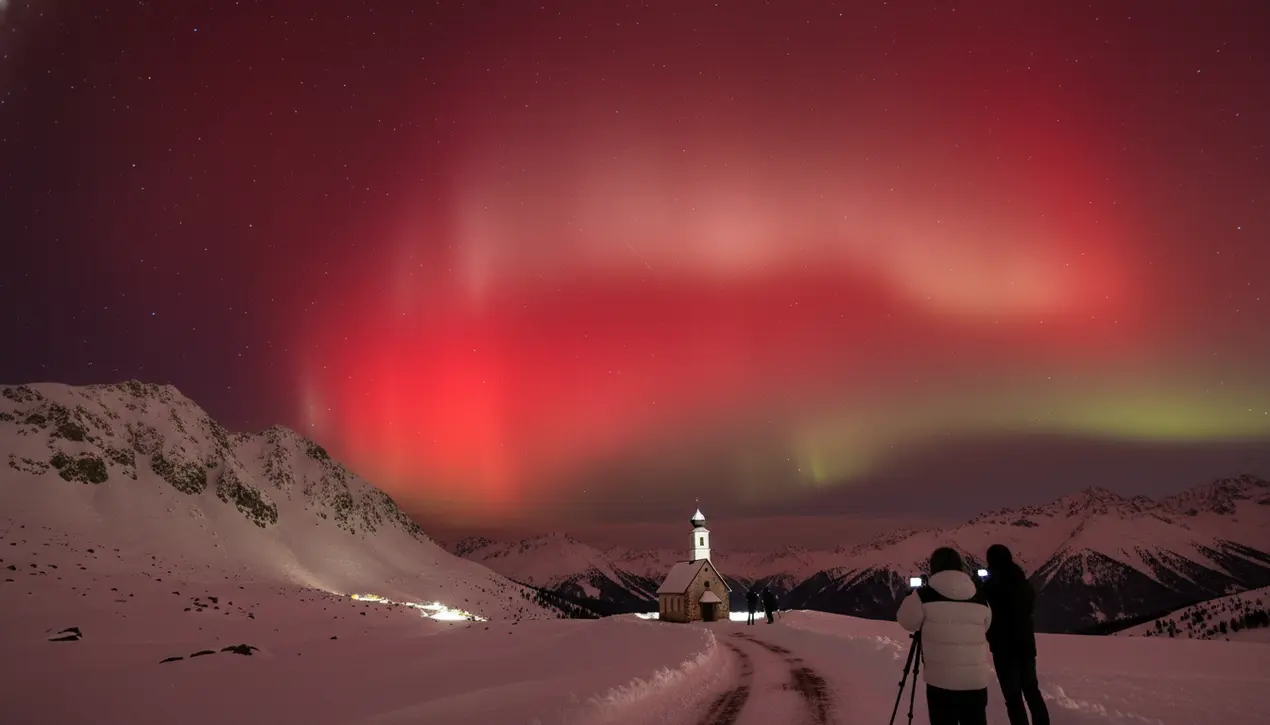
Sciencespace & astronomy
Rare red aurora lights seen across Europe during storm.
TH
Thomas Green
3 hours ago7 min read2 comments
Across the European continent, from the British Isles to the Alps, an extraordinary celestial phenomenon unfolded as a severe G4-class geomagnetic storm, born from a coronal mass ejection that tore away from the Sun days prior, painted the night sky with a breathtaking and unusually crimson hue of the Aurora Borealis. This wasn't just the typical, ethereal green curtain; seasoned skywatchers in Austria, a nation more accustomed to the distant glow of city lights than the otherworldly dance of charged particles, reported vivid, blood-red ribbons—a spectacle typically reserved for polar latitudes and indicative of solar particles exciting oxygen atoms at exceptionally high altitudes, around 200 miles above the Earth's surface.The event, a direct result of our star entering a period of heightened activity as it approaches the solar maximum of its 11-year cycle, serves as a potent reminder of our planet's intimate and vulnerable connection to its stellar parent, a relationship that governs not only these beautiful displays but also the very stability of our modern technological grid. Scientists at institutions like the NOAA's Space Weather Prediction Center monitored the storm's progression with a mix of awe and professional vigilance, as events of this magnitude carry the latent potential to disrupt satellite communications, GPS navigation, and even trigger voltage control problems in power systems, a risk famously illustrated by the 1989 Quebec blackout.The visual poetry of the aurora, therefore, is underpinned by a complex and dynamic astrophysical battle, where Earth's magnetic field acts as a shield, funneling these solar winds toward the poles in a protective maneuver that, when overwhelmed, results in such a widespread light show. For the amateur astronomers and photographers who braved the cold, capturing the rare scarlet glow with their long-exposure lenses, it was a night of pure cosmic theatre, a fleeting intersection of solar fury and terrestrial magnetism. And while the immediate storm has subsided, the Sun's restless surface suggests that more such performances are likely in the coming nights, offering a continued front-row seat to one of the universe's most magnificent demonstrations of fundamental physics, a vivid, real-time experiment whose beauty is matched only by its raw, elemental power.
#Aurora Borealis
#Geomagnetic Storm
#Europe
#Skywatching
#Red Aurora
#featured
Stay Informed. Act Smarter.
Get weekly highlights, major headlines, and expert insights — then put your knowledge to work in our live prediction markets.
Related News
Comments
Loading comments...
© 2025 Outpoll Service LTD. All rights reserved.
